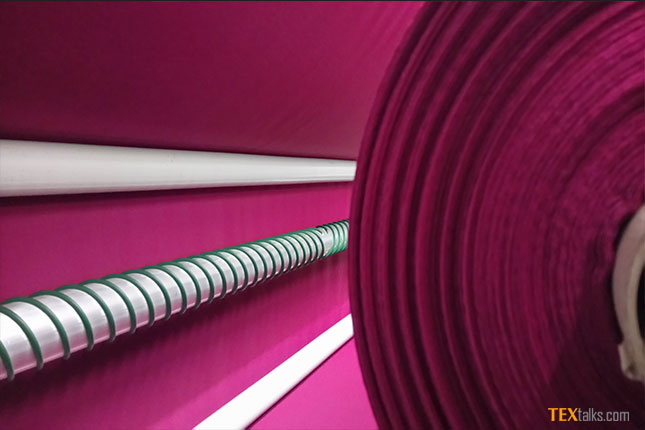The EU Ecolabel is a voluntary scheme that some Hong Kong traders may be aware of, whereby companies are able to label their products as having a lower environmental impact than other products within the same group. On 25 July 2017, the European Commission issued Decision 2017/1392 (the 2017 Decision) amending Decision 2014/350/EU (the 2014 Decision), establishing the ecological criteria for the award of the EU Ecolabel to textile products.
According to data from the European Commission, four out of five European consumers would like to purchase more environmentally friendly products, which are certified as such by an independent body. In the case of textile products, the Ecolabel can be awarded to all kinds of products made of textiles, including clothing and accessories, interior textiles and fibers, yarn and fabric.
Consumers in the European Union that purchase textile products bearing the Ecolabel (the logo of which is a flower), are able to be assured of a number of environment and health related factors. These include the limited use of substances that are harmful to the environment as well as to human health, reduced water, and air pollution, resistance to shrinking when the textile is being washed and dried, and color resistance to perspiration or when the product is being washed.
Importantly, the 2017 Decision amends the definition of what comprises textile products, so as to include intermediate textile products which can benefit from the Ecolabel. Thus, while textile clothing and accessories, as well as interior textiles, were already covered, the following paragraphs amend the earlier text:
Textile fibers, yarn, fabric and knitted panels: intermediate products intended for use in textile clothing and accessories and interior textiles, including upholstery fabric and mattress ticking prior to the application of backings and treatments associated with the final product;
Non-fibre elements: intermediate products that are incorporated into textile clothing and accessories and interior textiles, including zips, buttons, and other accessories, as well as membranes, coatings and laminates;
Cleaning products: woven or non-woven products made from textile fibers and intended for the wet or dry cleaning of surfaces and the drying of kitchenware.
Pursuant to the 2017 Decision, the validity of the Ecolabel requirements for textile products is now extended to 78 months. Before the adoption of the 2017 Decision, the criteria in force were due to expire in June 2018.
Moreover, the wording in relation to the exceptions that apply to recycled fibers or organic cotton fibers has been amended for clarity. In particular, the amendment provides an explanation of how the percentage of cotton in a product should be calculated for the purposes of ensuring compliance with criterion 1(a) or 1(b) of the Annex.
Criterion 1(a) concerns the “organic production standard for cotton”, while criterion 1(b) concerns cotton production according to Integrated Pest Management (IPM) principles. According to this explanation, the recycled cotton fiber shall be deducted from the required minimum percentages in all cases, except in those of products consisting of clothing for babies under the age of three.
Furthermore, amendments to the wording used in the organic cotton, IPM cotton and pesticides restriction requirements for textiles have been adopted in order to harmonize them with the wording used for the Ecolabelling requirements for footwear and furniture product groups. Revisions regarding the use of GMO-free cotton are also introduced.
In the 2017 Decision, the wording of criterion 13(b) setting down a prohibition on the existence of Substances of Very High Concern (SVHCs) in textile products has been amended for clarity. The change makes it clearer that the substance must fulfil both requirements contained in criterion 13(b), aligning SVHCs to those found on the REACH Candidate List of SVHCs.
Criterion 14 on the substitution of hazardous substances used in dyeing, printing and finishing is also amended to make it clear that “functional substances incorporated into synthetic fibres and man-made cellulose fibres during their manufacturing” that are hazardous may also be subject to restrictions under the criteria listed in table 5 of the Annex.
The Annex’s entry on restrictions is also amended, on the use of water, dirt and stain repellents, under criterion 14(b)(iv). This is done so as to harmonise it with similar provisions used in the footwear and furniture product groups, taking as a reference the revised criteria in Decision 2016/1332 for furniture and Decision 2016/1329 for footwear.
Amendments are also made to section (7) of Appendix 1 of the 2014 Decision. This appendix provides a list of restrictions of substances that apply to all production stages of the final product. The amendments bring detergents into the scope of the restriction, while at the same time narrowing the coverage of the restriction for non-ionic and cationic detergents and surfactants to those that are classified as hazardous to the aquatic environment under Regulation 1272/2008 (the CLP Regulation).
Other changes include those relating to the criteria for corporate responsibility, the standards for colour fastness of textiles, a clarification on the assessment and verification under criterion 3 on wool and other keratin fibres and a correction to the test reference for anaerobic biodegradability.
Several other amendments have been made by means of the 2017 Decision. Hong Kong traders of clothing and other textile products hoping to make use of the Ecolabel scheme, or wishing to keep using it so as to attract ever more environmentally-conscious customers, are advised to examine the amendments carefully.
Source Link: HKTDC



